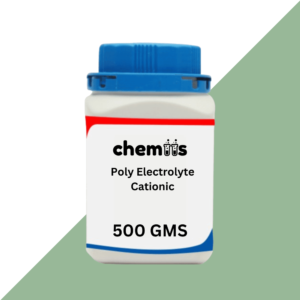Copper Chloride refers to two distinct chemical compounds: Copper(I) Chloride (CuCl) and Copper(II) Chloride (CuCl₂). These compounds are widely used across various industries for their excellent catalytic properties, ability to facilitate organic synthesis reactions, and versatile role in water treatment. Copper(I) Chloride is a greenish-white solid, while Copper(II) Chloride typically appears as yellow-green crystals. Both forms of Copper Chloride are highly soluble in water and alcohol, making them easily applicable in a wide range of chemical processes.
Copper Chloride’s versatility extends to numerous fields, including chemical manufacturing, water treatment, textile industries, and research laboratories. Its key role in facilitating oxidation reactions, acting as a catalyst, and contributing to the production of vibrant pigments makes it an indispensable component in industrial and scientific settings.
Applications of Copper Chloride
Copper Chloride is a highly versatile chemical that serves multiple roles in industrial processes, research applications, and environmental management. Below are the primary applications of Copper Chloride:
1. Catalyst in Organic Synthesis
Copper Chloride, particularly Copper(II) Chloride, is widely utilized as a catalyst in organic synthesis, where it accelerates oxidation and coupling reactions. It is used in the synthesis of a wide range of organic compounds, such as in the production of pharmaceuticals, agrochemicals, and other fine chemicals. Copper Chloride facilitates these reactions by providing a stable catalytic environment that reduces energy consumption and enhances reaction rates, making it indispensable in chemical manufacturing.
2. Water Treatment and Purification
Copper Chloride plays an essential role in water treatment applications due to its antimicrobial properties. Both Copper(I) and Copper(II) Chlorides are effective in reducing microbial growth in water, helping to purify and maintain the quality of industrial, municipal, and potable water systems. By controlling the growth of harmful bacteria, fungi, and algae, Copper Chloride ensures cleaner water for use in industrial processes, agriculture, and drinking water treatment.
3. Pigment Production for Ceramics and Glass
Copper Chloride is used in the production of copper-based pigments, especially in ceramics, glass, and enamel manufacturing. Copper Chloride imparts vibrant blue, green, and turquoise hues to glass and ceramic materials when subjected to high temperatures. Its use in pigment production is highly valued in the art industry and in manufacturing decorative glassware, tiles, and pottery.
4. Laboratory Research and Analytical Chemistry
Copper Chloride is widely used in research laboratories as a reagent for various chemical reactions and in analytical chemistry. It is used in redox reactions, as a catalyst in chemical syntheses, and in the preparation of copper-containing compounds. It is also applied in complexometric titrations and other analytical techniques to determine the presence of various ions and compounds. Researchers in chemistry and biochemistry rely on Copper Chloride for precise, reproducible results in laboratory experiments.
5. Textile and Dye Industry
Copper Chloride, particularly Copper(II) Chloride, is used as a mordant in the textile industry, helping dyes bond to fibers, ensuring color fastness and vibrancy. This makes it an important component in textile dyeing processes, where it helps maintain the color integrity of fabrics. It is also used in the production of various dyes and as a fixing agent to improve the overall quality of dyed materials.
6. Agricultural Applications
Copper Chloride is used in the agricultural sector as a key ingredient in fungicides and pesticides. Its fungicidal properties help protect crops from fungal infections, mold, and mildew, thereby improving crop yield and quality. Copper Chloride also plays a role in enhancing soil health and reducing the incidence of plant diseases, making it a critical component in crop protection formulations.
7. Electroplating and Metal Refining
Copper Chloride is used in electroplating processes to deposit a layer of copper onto the surface of various metals. This is commonly done in the electronics, automotive, and jewelry industries, where a uniform copper coating is required. Copper Chloride solutions are also used in metal refining processes to purify copper and other metals by facilitating the electrochemical reactions necessary for refining.
Benefits of Using Copper Chloride
- Effective Catalyst: Copper Chloride accelerates a wide range of chemical reactions, improving the efficiency of industrial processes and organic synthesis.
- Antimicrobial Properties: It controls microbial growth, making it essential in water treatment and purification systems.
- Pigment Production: Provides stable, vibrant colors in glass and ceramic industries.
- Versatility: Used in organic synthesis, textile dyeing, electroplating, and more.
- High Solubility: Easily soluble in water and alcohol, ensuring uniform distribution in various applications.
- Cost-Effective: An affordable solution for large-scale industrial use in water treatment, chemical synthesis, and agricultural protection.








Harshit Reddy (verified owner) –
Website is easy to navigate.
Devika Pillai (verified owner) –
Excellent service overall.
Mohit Bansal (verified owner) –
Product arrived on time.
Saumya Balan (verified owner) –
Ordering was easy.
Bhavana Rao (verified owner) –
Neatly packed items.
Aditi Menon (verified owner) –
Super fast shipping.
Charu Ghosh (verified owner) –
Great for science students.
Payal Kamat (verified owner) –
Received in good time.
Deeksha Iyer (verified owner) –
Clean and clear instructions.
Alka Dey (verified owner) –
Product quality is top-notch.
Aman Sheikh (verified owner) –
Great experience overall.
Nilesh Jadhav (verified owner) –
Very well worth the money.
Ramesh Natarajan (verified owner) –
Good service.
Sandeep Nair (verified owner) –
Items exactly as ordered.
Shweta Dubey (verified owner) –
No complaints at all.
Prateek Saxena (verified owner) –
Received in good time.
Aman Sheikh (verified owner) –
Great customer support.
Tushar Kohli (verified owner) –
Product arrived on time.
Shruti Bhandari (verified owner) –
Truly professional approach.
Hitesh Suri (verified owner) –
Hassle-free experience.